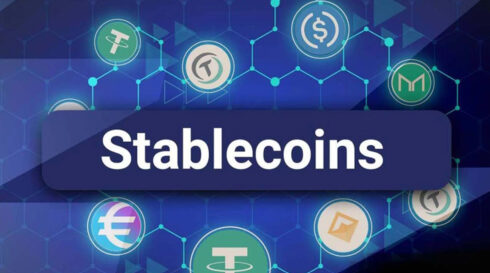SPONSORED
A lot of money is involved, and it must be challenging to track and manage. Stablecoins are a viable solution that allows companies to be seen as leading in transparency, scalability, and agility. Platforms like Desire Crypto have a robust algorithm that performs the research for bitcoin traders and makes trading easy. Also, it has helped many beginners to get started with bitcoin trading.
A stablecoin is a cryptocurrency with low volatility against the world’s most trusted currencies, such as the US dollar or euro. There are two types of stablecoins: fiat-collateralized and crypto-collateralized. Fiat-collateralized stablecoins depend on a third party for the requisite funds, while crypto-collateralized stablecoins are backed by secure collateral in cryptocurrency.
To provide investors with more security and control over their funds, stablecoins are beginning to be accepted as a form of payment by major corporations, which means that the days of stablecoins being on the fringes of the market are coming to an end.
But why are stablecoins critical to major corporations?
There are millions upon millions of dollars in billions of chain relationships that depend on fiat currencies for businesses to remain competitive. Fiat is still king and will likely remain king for quite some time. But where fiat can be cumbersome and unreliable, a stablecoin can prove convenient and reliable: fast and easy to transfer, with low fees. All of a corporation’s chain relationships could be handled by users with a single currency using blockchain technology backing up stablecoins.
Benefits of stablecoins over cryptocurrencies:
- Stability:
Cryptocurrencies are notoriously volatile, which makes them impractical in many situations. For example, if a business accepted cryptocurrency as a form of payment, they would have to manually update their records every time the price of cryptocurrencies fluctuated.
- Flexibility:
Stable currencies are much more flexible than cryptocurrencies regarding their overall value. This flexibility allows stablecoins to be used in nearly any situation where people would use a fiat currency without the complications of volatile cryptocurrencies.
- Low fees:
Because stablecoins are backed by fiat currency, there is no currency exchange fee to convert from one to the other. As a result, stablecoins are much more cost-effective than physical fiat transactions, which can be slow and costly due to fees associated with processing credit card transactions.
Stablecoins are built on blockchain technology, which means that all transactions that occur using a stablecoin can be easily traced and monitored. This traceability gives investors the security of knowing where their money is. In addition, Stablecoins can be transferred anywhere in the world at any time with minimal fees compared to other forms of moving fiat currencies.
Stablecoins are becoming more and more important in the crypto market. As companies continue to accept stablecoins as a form of payment, they will be able to move much faster than if they were relying on cryptocurrency volatility. In addition, users can depend on stablecoins as they rely on fiat currencies today, making them much more helpful money in everyday life.
What are the different types of stablecoins?
- Fiat-Collateralized Stablecoins:
These stablecoins are backed by a third party’s full faith and credit, which could be institutions like the US government or a government-approved digital currency. These stablecoins are often issued by foundations that have been created to manage coins secretively and impartially. Tether, a prime example, is backed by the US dollar. A reserve of dollars is created and held as collateral to maintain a stable price of Tether against the US dollar. However, people are still determining who has this reserve.
- Cryptocurrency-Collateralized Stablecoins:
These stablecoins are backed by secure cryptocurrencies such as Bitcoin or Ethereum. In addition, these stablecoins are much more transparent and reliable than fiat-collateralized stablecoins since they are supported directly with cryptocurrency that has been mined now with computer processors over the last couple of years. It means there is no need for third parties and no possibility of malicious actors accessing these funds in the future.
Due to the volatile cryptocurrency market, crypto-collateralized stablecoins have evolved and seek to introduce more excellent stability into the market through more decentralized methods. Crypto-collateralized stablecoins are backed by coins locked up and out of the market.
Algorithmic Stablecoins
The main difference between algorithmic and “traditional” stablecoins is that algorithmic stablecoins may pay out in fractions of tokens rather than whole tokens, allowing for transactions to be very small or impossible for all users.
Algorithmic stablecoins use some price feed as the underlying mechanism to control their supply. Decentralized crypto derivatives have been introduced previously but have become more prominent over time due to the lack of trust in centralized stablecoins. Algorithmic stablecoins can remove central entities using smart contracts, allowing the network to self-regulate supply and demand.







desire crypto is a crypto jew that desires bjs from sf tranny jew boys.
Digital Fiat scam
Just like FTX?
Folks, I’ve looked at crypto-“currencies” for a few years, and they are really evil. First of all, they are no currencies, but massive scams. Secondly, they will disposess you much faster and more radically than about any paper money. And thirdly, they burn huge amounts of energy. Last I heard, they’re already burning more than 2% of all energy consumption in the world.
Where is that bitch Greta Thunberg when you need her?
“Global electricity generation for the crypto-assets with the largest market capitalizations resulted in a combined 140 ± 30 million metric tons of carbon dioxide per year (Mt CO2/y), or about 0.3% of global annual greenhouse gas emissions.”
“Crypto-asset emissions is similar to emissions from diesel fuel used in railroads in the United States.”
https://www.whitehouse.gov/ostp/news-updates/2022/09/08/fact-sheet-climate-and-energy-implications-of-crypto-assets-in-the-united-states/